Acoustic sensors enable efficient and non-invasive monitoring of a wide range of species, including many that are difficult to monitor in other ways. Although they were initially limited in application scope largely due to cost and hardware constraints, the development of low-cost, open-source models like the Audiomoth in recent years has increased access immensely and opened up new avenues of research. For example, some teams are using them to identify illicit human activities through the detection of associated sounds, like gunshots, vehicles, or chainsaws (e.g. OpenEars).
With this relatively novel dimension of wildlife monitoring rapidly advancing in both marine and terrestrial systems, it is crucial that we identify and share information about the utility and constraints of these sensors to inform efforts. A recent study identified advancements in hardware and machine learning applications, as well as early development of acoustic biodiversity indicators, as factors facilitating progress in the field. In terms of limitations, the authors highlight insufficient reference sound libraries, a lack of open-source audio processing tools, and a need for standardization of survey and analysis protocols. They also stress the importance of collaboration in moving forward, which is precisely what this group will aim to facilitate.
If you're new to acoustic monitoring and want to get up to speed on the basics, check out these beginner's resources and conversations from across the WILDLABS platform:
Three Resources for Beginners:
- Listening to Nature: The Emerging Field of Bioacoustics, Adam Welz
- Ecoacoustics and Biodiversity Monitoring, RSEC Journal
- Monitoring Ecosystems through Sound: The Present and Future of Passive Acoustics, Ella Browning and Rory Gibb
Three Forum Threads for Beginners:
- AudioMoth user guide | Tessa Rhinehart
- Audiomoth and Natterjack Monitoring (UK) | Stuart Newson
- Help with analysing bat recordings from Audiomoth | Carlos Abrahams
Three Tutorials for Beginners:
- "How do I perform automated recordings of bird assemblages?" | Carlos Abrahams, Tech Tutors
- "How do I scale up acoustic surveys with Audiomoths and automated processing?" | Tessa Rhinehart, Tech Tutors
- Acoustic Monitoring | David Watson, Ruby Lee, Andy Hill, and Dimitri Ponirakis, Virtual Meetups
Want to know more about acoustic monitoring and learn from experts in the WILDLABS community? Jump into the discussion in our Acoustic Monitoring group!
Header image: Carly Batist
No showcases have been added to this group yet.
- @taylorcasalena
- | she, her, hers
sustainability strategist, naturalist, consultant
- 1 Resources
- 1 Discussions
- 6 Groups
- 0 Resources
- 0 Discussions
- 7 Groups
- @VijayKarthick
- | He/Him
Nature Conservation Foundation
I'm a PhD student from India, interested in utilising bioacoustics and technology to answer ecological questions. I'm a frog nerd :)

- 0 Resources
- 2 Discussions
- 9 Groups
Technologist and Visual storyteller focusing on social, conservations issues.



- 1 Resources
- 47 Discussions
- 17 Groups
- @Valentin_Stefan
- | He/Him
Interested in emerging technologies related to camera traps for pollinators
- 0 Resources
- 4 Discussions
- 18 Groups
- 1 Resources
- 1 Discussions
- 11 Groups
Interested in bioacoustics
- 0 Resources
- 0 Discussions
- 14 Groups
- @NG
- | She
I am a Conservationist and Ornithologist passionate about biodiversity conservation and environmental sustainability.

- 0 Resources
- 1 Discussions
- 7 Groups
A Wildlife Biologist interested in Environment Assessment and Restoration, In-situ and Ex-situ strategies, Technologies used in Conservation and Illegal Wildlife Trade.


- 0 Resources
- 16 Discussions
- 15 Groups
Clemson University
- 0 Resources
- 0 Discussions
- 7 Groups
- @WyattB
- | He / him / his
Data science and ML specialist
- 0 Resources
- 2 Discussions
- 7 Groups
Biologist who is new to the world of bioacoustics and ecological restoration.
- 0 Resources
- 0 Discussions
- 1 Groups
I'm a MIDS graduate student at UC Berkeley working on a citizen science app for automated frog call identification. I'd like to know how users interact with such apps and their pain points. This 5-minute survey will...
27 September 2024
The African Bioacoustics Conference!
18 September 2024
After all the discussion about calibration yesterday during the bioacoustics hardware call, I figured I should link to my talk on the subject from a few years ago.
6 September 2024
The Coral Research & Development Accelerator Platform opened it's Coral Accelerator Program 2024 for internationally collaborating teams to apply with innovative projects ranging from 'novel early-phase' to 'final...
26 August 2024
The IQOE Task Team on Low-Cost Hydrophones for Research, Education and Citizen Science would like to understand the needs of all hydrophone end-users. Please answer a few questions in this online survey! By...
26 August 2024
Join us for Season Five of the WILDLABS Virtual Meetup Series, tuning in to the world of Bioacoustics! Laying the groundwork for our new horizon scan research, each event will convene cross-sector experts to explore a...
22 August 2024
Join us in celebrating this year’s Judging Panele Award winners!
19 August 2024
Join us in celebrating this year’s Community Choice Award winners!
15 August 2024
Vote for your favorite submissions that best demonstrate conservation impact, novel innovation/discovery, and strong storytelling of the work and the sector.
12 August 2024
On the final day of the #Tech4Wildlife Photo Challenge, we wrap up looking at past and current submissions that feature the fastest growing areas of conservation tech. Today’s topic: bioacoustics!
9 August 2024
We are thrilled to introduce our new horizon scan, which will chart the future of bioacoustics. By collectively prioritizing emerging innovations that could transform the field, we aim to build consensus, facilitate...
5 August 2024
Wildlife Acoustics is proud to offer a grant program to support the advancement of wildlife research, habitat monitoring, and environmental conservation
4 August 2024
August 2025
event
September 2025
event
October 2025
November 2025
event
September 2024
event
event
64 Products
Recently updated products
| Description | Activity | Replies | Groups | Updated |
|---|---|---|---|---|
| Thank you! |
|
Acoustics | 1 year 9 months ago | |
| A few more! |
|
Acoustics | 1 year 9 months ago | |
| Hi, thanks so much for getting back. You can reach me at j.insupp@fh-cuas.at |
|
Acoustics | 1 year 10 months ago | |
| Hi everyone, I wanted to provide an update on behalf of Wildlife Acoustics regarding some of these comments in this thread. As some of you may know, we have just announced... |
+19
|
Acoustics, Sensors | 1 year 10 months ago | |
| I second that! |
|
Acoustics | 1 year 10 months ago | |
| Hi Wildlabbers!We were asked to share this opportunity to present at the upcoming Audiomoth conference:Presenters are urgently needed -... |
|
Acoustics | 1 year 11 months ago | |
| I've tested a Petterson ultrasonic microphone with a sample rate of 384khz and it works out of the box with this software as well. Would be cool to sound localize some bats. |
+22
|
Acoustics | 1 year 11 months ago | |
| Steve Simpson (on behalf of collaborator @MilesParsons) joined our June Variety Hour to give a report from the Wolrd Oceans Passive... |
|
Acoustics, Marine Conservation | 2 years 1 month ago | |
| Hi Tom, Seeed Studio also offers manufacturing services. Check out more info on the website here :) |
|
Acoustics | 2 years 1 month ago | |
| Carly, that would be great! Thanks! I work with soundscapes and love the work of Rainforest Connection! I'll send you an email (@CUNY) to coordinate! |
|
Acoustics, AI for Conservation, Conservation Tech Training and Education, Drones, eDNA & Genomics, Emerging Tech, Geospatial | 2 years 2 months ago | |
| Hi Donya! You might check out the Conservation Tech Directory to see what projects/organizations/tools best align with your interests and skills. |
|
Acoustics, AI for Conservation, Camera Traps, Drones | 2 years 2 months ago | |
| I am exploring project ideas to monitor marine reef systems using passive acoustic monitoring and am curious what software people prefer... |
|
Acoustics | 2 years 3 months ago |
The WILDLABS Variety Hour: March 2023 - YouTube
30 March 2023 4:04pm
Global shortage of Raspberry Pis - What are the alternatives
3 November 2022 10:27am
29 March 2023 10:13am
UPDATE: The Banana Pi didnt work out for us as it was not possible to track back all the components and ensure that they were responsibly sourced. The Rock board did work for us and we were able to port our system onto this. We will be rolling out units using this over the summer. It also looks like Raspberry Pis are coming back on line and we were able to secure a bulk order for deliver mid-summer
29 March 2023 10:14am
Yes, but for our needs that are not powerful enough
Exploring storage options for mass data collection
22 March 2023 3:20am
22 March 2023 7:36pm
Hi Adam!
I mostly live within the ecoacoustics space so I'll just speak on the hydrophone part of your request; Arbimon is a free web/cloud-based platform with unlimited storage for audio files. We've got an uploader app as well for mass-uploading lots of files. There's also a bunch of spectrogram visualization/annotation tools and analysis workflows available. It's AWS running under the hood.
I have some experience working directly with AWS & Microsoft Azure, and I've found personally that AWS was more user-friendly and intuitive for the (fairly simplistic) kinds of tasks I've done.
27 March 2023 5:23am
Alex Rogers: Acoustic Devices for Biodiversity Monitoring — Smart Forests Atlas
24 March 2023 12:28pm
Catch up with The Variety Hour: March 2023
23 March 2023 11:09am
Using acoustic monitoring to track infectious disease risk
8 March 2023 1:29pm
Proposals wanted for Innovation in Practice
6 March 2023 10:34pm
USD500 available for your workshop
6 March 2023 1:30pm
AudioMoth and Song Meter Micro battery life tests
16 February 2023 4:09pm
24 February 2023 2:20pm
Hi Justin, looks like the link is not working!
24 February 2023 5:23pm
Should work now - a stray full stop snuck in there!
26 February 2023 2:58pm
Hi Justin,
Dropping in a question you've received over on twitter:
Hi! Nope, this report doesn't test SD card size or any other parameters like read/write speed or brand.
— Tessa Rhinehart (@TessaRhinehart) March 7, 2023
Use of passive acoustic monitoring methods to estimate poaching pressure of European turtle doves in Greece (Ionian Islands)
24 February 2023 12:54pm
The Arbimon newsletter is back!
23 February 2023 11:34pm
New guidance - Good practice for ecoacoustic monitoring
23 February 2023 10:31am
Acoustic monitoring fieldwork positions in Puerto Rico
22 February 2023 2:41pm
Texas Chapter of The Wildlife Society’s Annual Meeting 2023
20 February 2023 10:56pm
Research Assistants in Kitzes Lab
16 February 2023 4:12pm
Developing Two Non-invasive Survey Methods for Freshwater Ecosystems: Environmental DNA and Ecoacoustics
10 February 2023 10:41am
Swift Software Developer - Lab of Ornithology
10 February 2023 10:38am
Research Associate - Machine Learning (Underwater Sound)
10 February 2023 10:19am
Cleaning audiomoth circuit board
17 January 2023 11:42am
28 January 2023 5:40am
I'd also add that if the boards are just dirty or dusty, you can just remove all batteries, then wash with a toothbrush and water. Air dry (or use compressed air which speeds things up greatly) and then spot clean areas that need solvent with isopropanol as Harold mentioned. Also if you don't have access to conformal coating, you can also use a non-conductive clear lacquer. The conformal coating covers all the components and prevents short circuits due to conductive water (ie: salt water) or other contaminants. However if you do use a conformal coating, make sure all cables are connected first and the device is in the exact state that it will be deployed in. Also don't conformal coat the battery connectors since you'll want to change out batteries periodically.
2 February 2023 8:13am
Hi Akiba,
thanks for your this great advice! I used the conformal coating on parts
of the PCB with exposed metal but was has hesitent using it on the "backside" with
all the resistors and transistors. Also what about the "back" of the microfon. Might this side be coated?
Do you have any experience with coatings @alex_rogers
Greetings,
Robin
9 February 2023 9:56pm
Cleaning the water damaged audiomoth boards is in full swing:
Left before, right after cleaning
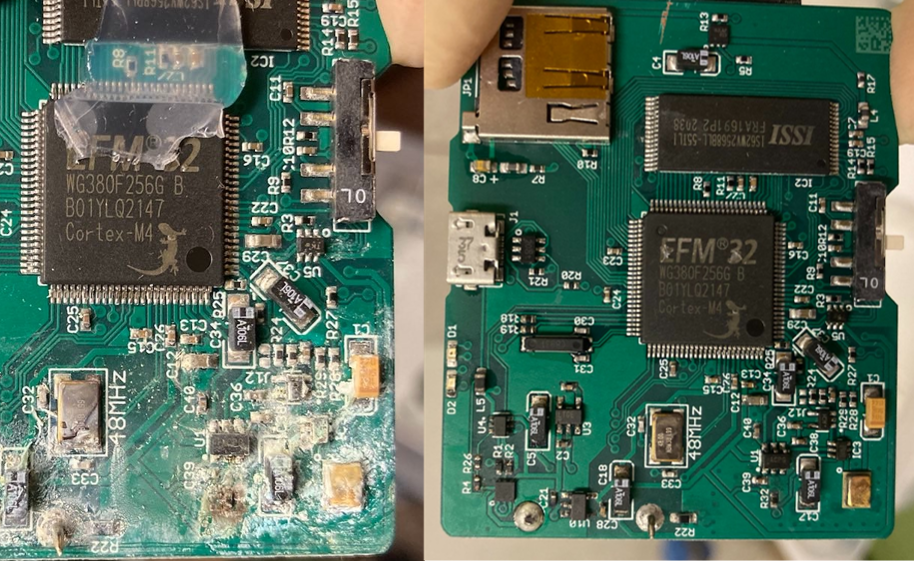
Technical Officer – IMOS Animal Tracking Facility
7 February 2023 12:30pm
Commercially available connected audio sensors
2 February 2023 3:08pm
2 February 2023 3:55pm
Hi!
I am not aware of any such connected loggers/recorders but they would be nice.
The AudioMoths have been revolutionary in providing audologging at a low cost but they take a lot of "data muling" (carrying SD cards in and out of the field sites) and swapping of batteries.
Cheers,
2 February 2023 7:50pm
Hi Lars, thanks for the response. We are using lots of Song Meter Micro's atm and they have proved to be resilient. Just need something which doesn't involve going on site regularly - but get the data off.
3 February 2023 7:04pm
Rainforest Connection's (RFCx) Guardian devices may be of interest. They are solar-powered and have connectivity options for Wifi, GSM and satellite transfer. They've previously been used for detecting e.g., gunshots or chainsaws (using edge computing) and then sending positive detections/alerts to folks on the ground. RFCx also hosts Arbimon, a free, no-code software platform that facilitates analysis of audio data as well. Happy to chat more if you'd like to talk further about it!
Job: Building a network of conservation tech across continents
2 February 2023 1:50pm
Consultancy opportunity: Wildlife monitoring specialist
31 January 2023 11:26am
AI for Forest Elephants Challenge
25 January 2023 3:34pm
Pandas & Prose with Karen Bakker and David Thau
19 January 2023 11:55pm
Apply Now: AI for Conservation Office Hours
18 January 2023 5:15pm
International Congress for Conservation Biology
16 January 2023 2:53pm







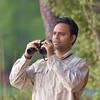









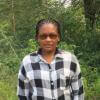







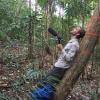













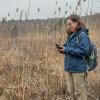


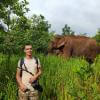





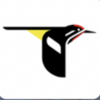






28 March 2023 9:37pm
Have you considered Arduinos?